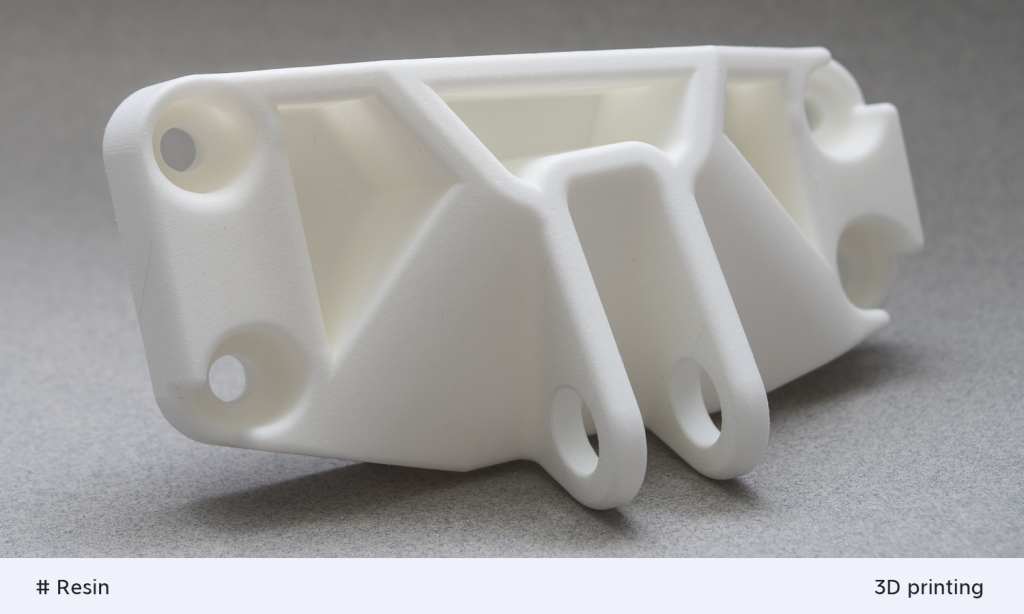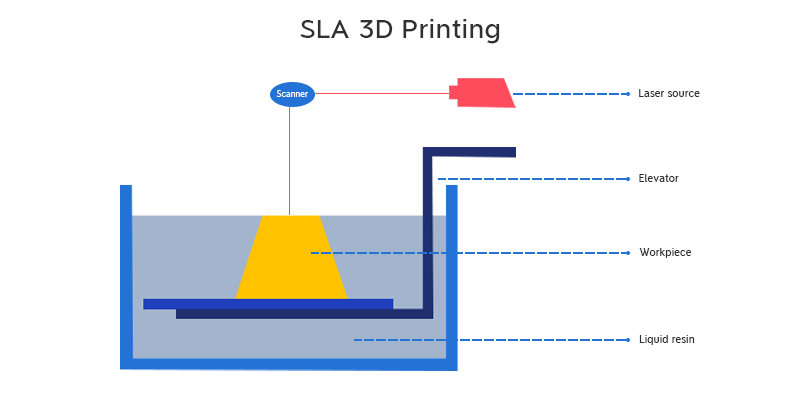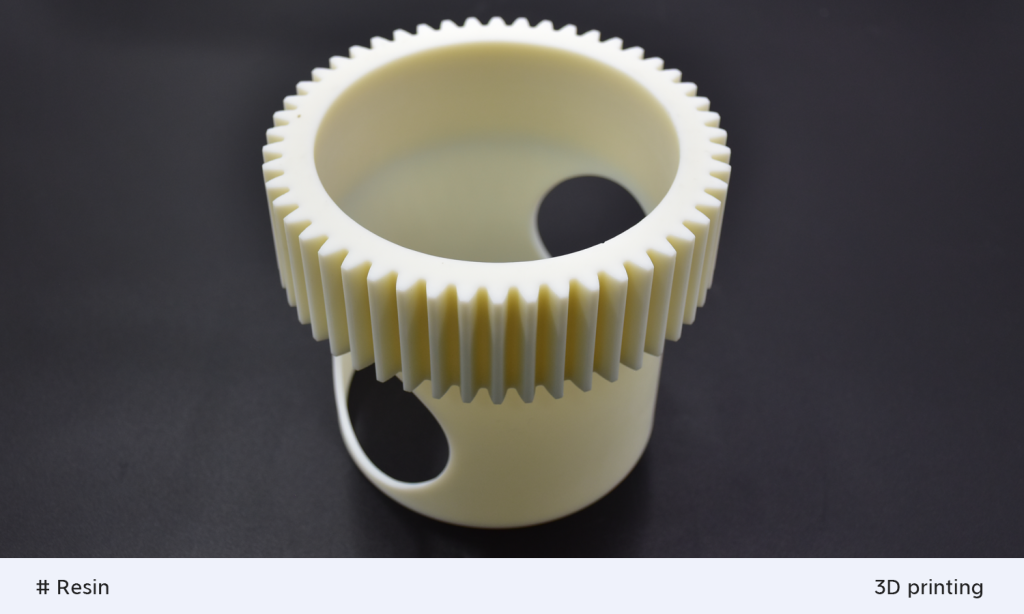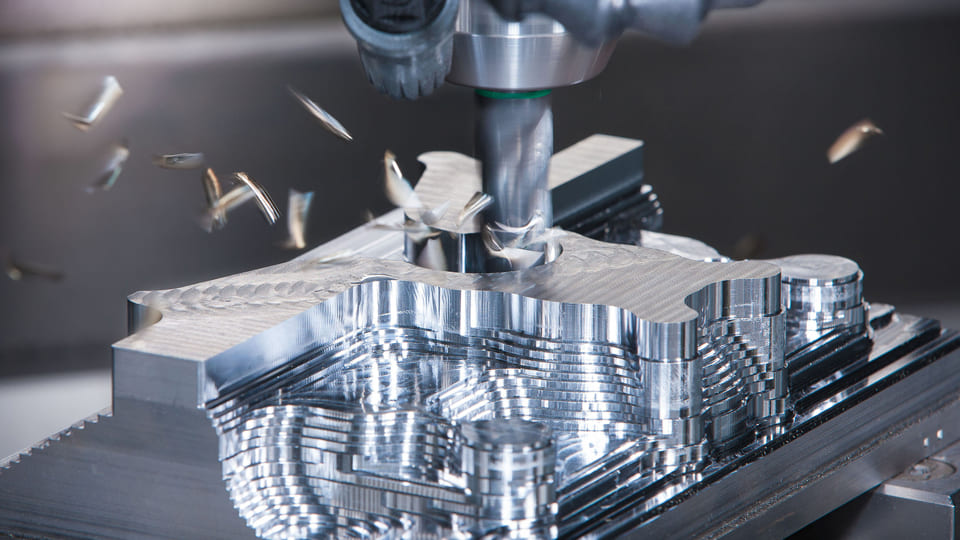3D printing has transformed the design and production of parts, greatly facilitating rapid prototyping and even custom production. Two very important types of 3D printing technologies include Selective Laser Sintering, SLS for short, and Stereolithography, SLA. Although both make use of laser technology, laying parts one layer at a time, each of them does this in their own specific way, fitting certain applications perfectly.
In this article, we will check out the main differences between SLS and SLA, so you can figure out which technology is better for your next project.
What is SLS?
SLS is short for Selective Laser Sintering, which uses a laser to fuse the powdered material into solid shapes. The process begins with spreading a thin layer of powder on the build platform, preheated to just below its sintering point. A laser selectively scans each layer based on the part’s cross-sectional design, melting and bonding the powder particles together while fusing them with the layer below. After each layer is sintered, the platform lowers, and a new powder layer is applied until the entire model is built. Once printing is complete, the part is cooled, removed from the surrounding powder, and may undergo additional post-processing.

One of the biggest advantages of SLS is that it doesn’t require additional support structures. The unsintered powder surrounding the part naturally supports it, so there’s no need for extra support materials during printing. This makes SLS particularly good for complex designs with overhangs.
Advantages of SLA
You can use any type of material. Basically, anything that is a powder that can bind together when exposed to heat is a SLS printing material. In addition, there is no wastage as you can recover any unsintered powder.
The manufacturing process is relatively straightforward. You do not need support as the loose unsintered powder is a natural support.
The forming process has nothing to do with the complexity of the part. The complexity of the part is almost unrestricted, which is especially good for the manufacture of parts of complicated shapes.

Products can be directly prepared based on the design drawings without designing and manufacturing molds, and parts can be manufactured without any machining.
The production cycle of the product is short, so it can quickly be put on the market for trial, and the opinions of users can be solicited promptly, which allows improvements and betterments to be made in time.
The unit price of the product is almost independent of the batch, which is especially suitable for the development of new products or the production of single pieces and small batches of parts.
SLS is very suitable for:
- Functional parts and prototypes
- Automotive and aerospace parts
- Medical equipment
- Customized products
What is SLA?
Stereo Lithography Apparatus (SLA) is among the pioneering 3D printing technologies and works with a principle in which ultraviolet (UV) light is applied to solidify liquid resin in layers. The process uses a specific wavelength of ultraviolet (UV) light to selectively cure liquid resin into solid layers. When the UV light beam is directed onto the resin surface, the resin rapidly polymerizes and solidifies within microseconds, forming a thin, rigid layer. The SLA printer builds the object layer by layer by repeatedly curing resin in precise patterns based on the 3D model.

SLA requires support structures for some prints, primarily when the parts have complex geometries or overhangs. These supports are built simultaneously with the part and have to be removed during post-processing.
Advantages of SLA
The solidification molding method is the earliest rapid prototyping manufacturing process, with high maturity and time-tested.
The prototype is directly made from the CAD digital model, with fast processing speed and short product production cycle, and no cutting tools and molds.
It can process prototypes and molds with complex structures or difficult to form using traditional means.
It makes the CAD digital model intuitive and reduces the cost of error repair.
It can provide samples for experiments and check and verify the results of computer simulation calculations.
It can be operated online and remotely controlled, which is conducive to production automation.
SLA is suitable for:
- Prototype production
- Jewelry and dental applications
- Miniature models
- Art projects
SLS vs. SLA: What Are The Differences?
The key differences between SLS and SLA 3D printing processes lie in the materials and support structure. Other differences include precision, surface quality and corrosion resistance.
Materials and Strength
SLS is best known for its ability to be used in a variety of powdered materials that produce strong, durable prints with high wear resistance; examples include nylon (PA12). SLS creates functional prototypes and end-use parts that are subjected to wear and tear, such as those found in automotive or medical devices. SLA utilizes liquid photopolymer resins, which can range from extremely hard and rigid to soft and flexible. So, SLA parts usually have more detail and a smoother finish, but they’re quite brittle compared to SLS parts. This means that SLA is fantastic for detailed prototypes, but it may not be ideal in scenarios where you want the parts to be tough or flexible.
Precision
The shrinkage rate of the SLA 3D printing process is less than 0.4%, while that of the SLS 3D printing process is about 2% to 4%. Therefore, SLA can produce more precise printed parts. However, SLA printed parts need to be post-cured, and there will be residual stress on the workpiece, so the dimensional stability is not good enough. After a while, additional shrinkage and creep may occur.
Resolution and Surface Quality
The first advantage SLA has over SLS is in resolution. The UV laser used in SLA has a smaller spot size than the infrared laser used in SLS; hence, SLA can print with finer details. The SLA is therefore better for producing parts with intricate designs and smooth surface finishes. SLS generally leaves a bit of a rougher surface due to the powder particles. You can make it nicer with some post-processing, but it won’t be ever as smooth as SLA prints. So, if you need a super smooth and polished surface, then SLA is probably your best bet.
Corrosion Resistance
The environmental resistance (temperature, humidity and chemical corrosion) of SLS printed parts is close to that of thermoplastic materials. However, the resistance of SLA printed parts is relatively poor. For example, SLA workpieces molded with epoxy resin are easily corroded by moisture and chemicals and will soften and warp in an environment above 38°C.

Support Structures
Another major difference between the two technologies is the way they handle support structures. SLS does not need any other support structures, as the powder that is not in use around the printed part acts as a natural support. This is one reason SLS is great at making complex parts with overhangs or internal cavities. SLA often needs supporting structures, especially for parts with overhangs or delicate features. These can be very difficult to remove, and sometimes they can leave marks on the part, affecting the final appearance. However, the superior resolution and smooth finish of SLA usually justify the extra post-processing effort.
Applications
SLS is suited for producing functional parts and prototypes, mainly in aerospace, automotive, and applications for medical devices. Since SLS can print with durable materials like nylon, it comes in handy when creating parts that should be strong or flexible and can withstand wear and tear. It’s super useful for making a bunch of stuff at once, since the unsintered powder can give support and cut down on waste. SLA is great for projects where you need that detail and a nice finish. People mostly use it for prototypes, jewelry, dental models, and anything else that needs to look spot-on and smooth. Plus, SLA can do small production runs of cool items, like figurines or fancy molds.
Cost and Efficiency
As for cost, SLA is generally cheaper for smaller prints, especially if you’re dealing with high-detail models. The resins for SLA are usually less expensive than the fancy powders you need for SLS. However, keep in mind that SLA may require more time for post-processing, like cleaning and curing the printed parts, so that could bump up your total cost a bit.
On the other hand, SLS is usually more expensive up-front, mainly because of the use of more expensive and specialized materials and equipment. However, SLS can be the most cost-effective for large prints or functional prototypes, especially when one is in production with a batch of parts or desires to create parts that can sustain heavy-duty usage.
Which One Should You Choose?
The choice between SLS and SLA depends on the project requirements. SLS would be the better option if you need functional, durable parts that can handle wear and tear. It is ideal for such industries as automotive, aerospace, and manufacturing, where strength and flexibility are key.
On the other hand, if your focus is on detail, surface quality, and precision, and you don’t need your parts to be highly durable, SLA is the way to go. It is great for high-resolution prototypes, detailed visual models, and applications where appearance is important—for example, jewelry or dental.
Make Your Idea Take Shape!
Conclusion
SLS and SLA are both awesome 3D printing technologies that give you good results. SLS is great for making functional parts, while SLA is the go-to for detailed, smooth parts. Knowing what each technology excels at and where it falls short means you’ll be able to choose the right one for your 3D printing needs.
Whether you are prototyping a new product or creating end-use parts, choosing the right 3D printing technology will ensure you get the best possible results for your project.






